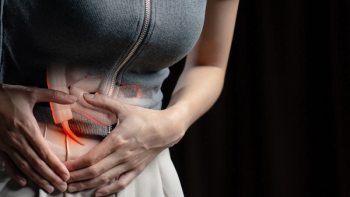
Exploring Hobbies and Mindfulness With Cancer
Practicing the art of mindfulness can be beneficial to health and healing during breast cancer.
Breast cancer is a rude interruption to a healthy life. It comes in pushing and shoving like a bratty playground bully wanting its own way. As it interrupts and wreaks havoc, normal life falls by the wayside. Our focus shifts and our priorities change.
When cancer becomes part of your life, it’s easy to forget to do the things you enjoy. That’s understandable because it takes a lot of energy to fight cancer and naturally, health becomes a top priority. But recreational activities don’t have to fall by the wayside. As you regain strength and feel ready to reclaim parts of your life, hobbies can be a wonderful part of healing therapy.
In September 2016, I wrote an
Art provides a wonderful avenue for the practice of mindfulness. There are so many options available. Your choice will depend on your individual interests and tastes. Any physical limitations you may have will also need to be considered when making your choice.
I’ve found the benefits of art therapy in my own life and have enjoyed exploring various mediums. Creative writing, acrylic painting, pottery, photography, drawing, knitting and crocheting are some of the rewarding hobbies I’ve appreciated. If you’ve never participated in a hobby or craft, you might find it enjoyable, too.
To give an example of how hobbies can invoke the art of mindfulness, I’d like to share my first experience with pottery and hopefully, you’ll gain a better understanding of how beneficial art therapy can be.
I’d wanted to take a pottery class for many years, but never got around to it. After more than 20 years passed by, I slipped a new entry onto my bucket list — take a pottery class someday. It seemed a reasonable thing to do after such an extended period of time, but just yesterday, I was able to cross that entry off my list.
A local arts and crafts show allowed me the opportunity to talk with a potter. She was giving a demonstration and seeking those interested in an upcoming class for beginners. I was intrigued. This was my chance to do what I’d always wanted to do, so I signed up. I was so excited that I was going to finally be able to do what I'd longed to do.
I entered the art studio with anticipation. I wasn’t sure what to expect, but I chose to be brave. I knew working the clay was going to take a lot of upper arm strength. I didn't know if I’d be able to manage the clay with my lymphedema, but I was going to try. The instructor explained the process for throwing the clay and using the pottery wheel. After I’d learned the basic techniques, it was time for me to sit down at the pottery wheel and attempt to make my first project.
As I held a chunk of clay in my hands, I slammed it down onto the pottery wheel just as the instructor had demonstrated. Next, I began sealing it to the stone and started the wheel in motion by depressing the electric foot pedal. Wrapping my fingers around the clay, I began to gently apply pressure. The cool, wet clay felt comforting in my hands and I found myself intent on watching the clay take new form. Next came the coning process and then flattening. Over and over again, I repeated the processes until my clay was perfectly centered on the wheel. The instructor smiled approvingly and told me it was now time to begin crafting my piece.
Inserting my thumb into the clay as the wheel spun, I watched a large opening begin to form. I found myself thinking about nothing other than the clay. When the hole was wide enough, I slipped my other thumb into the hole and as I did so, I began exerting outward pressure with both thumbs which expanded the clay opening. Continuing to work, I took delight re-wetting, shaping, and molding the clay. Soon, I had a perfectly formed bowl and I felt great accomplishment in what I’d done.
During the entire time I’d been in the studio, I hadn’t worried once. I’d only focused on exactly where I was and what I was doing at the time. For two whole hours, I’d been absorbed in creating. I didn’t realize how freeing the entire process had been until after I’d completed my first lesson.
Intentional mindfulness is powerful. Spending time doing something you enjoy doing can be therapeutic. It doesn’t have to be an art project. It can be anything you give your full attention to like reading, writing or even listening to music. The key to practicing mindfulness is to allow yourself the freedom to be absorbed completely by the activity. Enjoy experiencing what you feel as you focus on your hobby or art project. Watch anxiety, worry and fear slip away as you learn to appreciate the present. It’s almost like taking a mini vacation in the middle of the day.
I highly encourage you to try practicing mindfulness. If you’ve never experienced it, I think you’ll be pleasantly surprised. Don’t be afraid of doing it incorrectly! There are no set rules, only guidelines. Here are some helpful tips:
- When practicing mindfulness, choose an activity you will enjoy.
- As you begin your activity, narrow your focus so you’re only thinking about what you’re doing at the time.
- Don’t allow any outside stressors to enter your mind — thoughts of worry, fear or anxiety will ruin your mindfulness experience.
- Be present in the moment. While you’re reading, writing or creating, allow yourself to completely enjoy what you’re doing.
- Pay special attention to how you’re feeling.
- Allow yourself uninterrupted time to complete your project. You may want to work on something for a short period of time and come back to it later, but don’t put pressure on yourself to complete your project in one sitting. Do what feels best for you.
- Don’t feel like you have to be locked into a specific art medium or hobby. Variety is wonderful! Try new things but be sure to always enjoy the experience.
- If you aren’t sure how to begin practicing mindfulness, some cancer centers offer free classes and materials. Check out your local hospital or treatment facility to find classes near you.
There are many forms of mindfulness. Some involve a more spiritual side and border on meditation, but I’ve chosen to only focus on the benefits of creativity in this article. If you feel the need to delve deeper into mindfulness, there are many articles on the internet that can help you.
In closing, I’d like to encourage you to allow your creative juices to flow. Even if you don’t think you have an artistic bone in your body, you probably do. Art is the creativity of self-expression and beauty is in the eye of the beholder. Just be sure to experience the process as you create and have fun doing it. Mindfulness is a healthy escape when dealing with the many stressful circumstances that can accompany cancer.
References:




